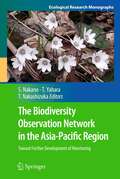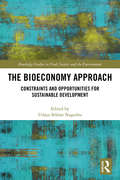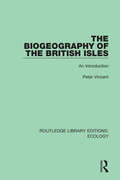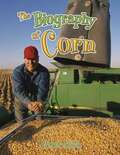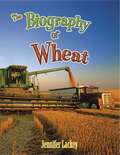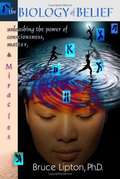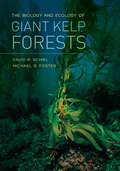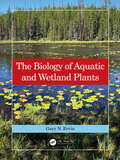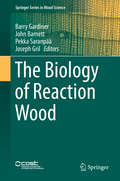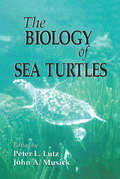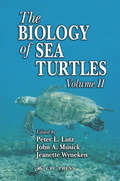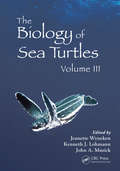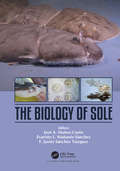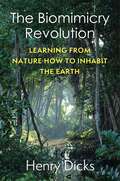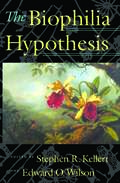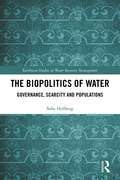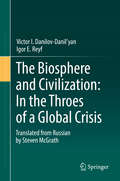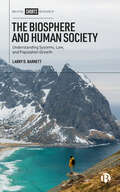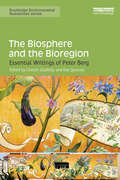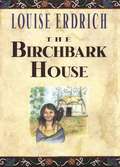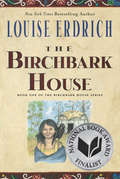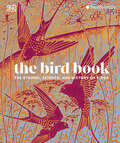- Table View
- List View
The Biodiversity Observation Network in the Asia-Pacific Region
by Shin-Ichi Nakano Tetsukazu Yahara Tohru NakashizukaBiological diversity is important for ecosystem function and services, which in turn is essential for human well-being. Under the Convention on Biological Diversity, international efforts have been made to achieve a significant reduction in the current rate of biodiversity loss. The loss continues, however. The Asia-Pacific region includes both developing countries with high biodiversity and developed countries with sophisticated data collection and analyses, but only limited information about the status quo of biodiversity in this region has been available. Many Asia-Pacific countries have rapidly grown their economies and social infrastructures, causing a loss of biodiversity and requiring an urgent mandate to achieve a balance between development and conservation in the region. In December 2009, scientists successfully organized the Asia-Pacific Biodiversity Observation Network in the region, to establish a network for research and monitoring of ecosystems and biodiversity and to build a cooperative framework. The present volume is the first collection of information on biodiversity in the Asia-Pacific and represents a quantum step forward in science that optimizes the synergy between development and biodiversity conservation.
The Bioeconomy Approach: Constraints and Opportunities for Sustainable Development (Routledge Studies in Food, Society and the Environment)
by Udaya Sekhar NagothuThis book examines the bioeconomy concept, analysing the opportunities it can generate, the constraints and the potential benefits for society. The main objective of bioeconomy is to promote economic development, by creating jobs and enhancing the sustainable utilization of bio-resources. A primary driver of bioeconomy strategy, therefore, is the need to respond to the growing population's food and economic requirements. While today research and literature related to bioeconomy are limited, this book presents a unique collection of perspectives on the complex dimensions of the bioeconomy debate. Drawing on the experiences from Europe, Asia and Africa, it presents an international overview. The chapters address a wide range of issues, including coastal-land interactions, ecosystem services, food production, rural development, agriculture, forest management and bioenergy. As a whole, the volume outlines what role bioeconomy can play in contributing to the United Nations Sustainable Development Goals (SDGs) without compromising on the ecological sustainability and equitable distribution of benefits. The book concludes by providing recommendations for developing bioeconomy in respective sectors (agriculture, forestry, fisheries, renewable energy) and directions for planning future bioeconomy programmes and strategies. The Bioeconomy Approach will be of great interest to students and scholars of ecological economics, development economics and environmental economics, as well as policy-makers and practitioners involved in sustainable development.
The Biogeography of the British Isles: An Introduction (Routledge Library Editions: Ecology #17)
by Peter VincentOriginally published in 1990, The Biogeography of the British Isles is devoted to the biogeography of the British Isles and surrounding shelf seas. Bringing together a wealth of diverse information, it is thoroughly referenced and well illustrated, and will be invaluable to students of geography, environmental science, ecology, botany, and zoology. The book traces the development of British biogeography over the last two centuries, examining key topics such as ecosystems, habitats, and niches in the context of plant and animal distribution. The book gives a detailed account of the development of biogeographical mapping and recording systems, and describes modern-day distributions, both in the countryside and in urban areas against the backcloth of human activities.
The Biography of Bananas (How Did That Get Here)
by Rachel EagenAlmost unknown in North America before the 1870s, bananas quickly became a popular fruit with a rough history. It was explained who grows your bananas, how they are harvested, and why the banana may soon become extinct.
The Biography of Corn (How Did That Get Here?)
by L. Michelle Nielsen L. Michelle NielsonMaize, or com, was the staple food of many early cultures in South America, Mesoamerica, and the Caribbean. <p><p>The Biography of Corn will teach young readers how the farming of corn spread to the rest of the world and how corn may be one answer to today's problem of fossil fuel consumption.
The Biography of Wheat (How Did That Get Here?)
by Jennifer LackeyThe growing of wheat as a staple food source made permanent settlements possible, particularly for settlers moving West. In this fascinating new book, children will learn how one of the world's most important food crops is grown, harvested, sold, and processed.
The Biology Of Belief: Unleashing The Power Of Consciousness, Matter And Miracles
by Bruce LiptonIn The Biology Of Believe Bruce Lipton explores celular development and how the environment plays a much more important roll in how life develops than conventional science ever thought. He challenges the belief that genetics control how we and all life develop and thrive ground breaking research. We once believed that the world was round but now marvel that anyone would have thought this. Bruce Lipton along with many micro biologist genetics are the blue print and plans but our environment and beliefs are the catolist that determine the quality of life.
The Biology and Ecology of Giant Kelp Forests
by David R. Schiel Michael S. FosterThe largest seaweed, giant kelp (Macrocystis) is the fastest growing and most prolific of all plants found on earth. Growing from the seafloor and extending along the ocean surface in lush canopies, giant kelp provides an extensive vertical habitat in a largely two-dimensional seascape. It is the foundation for one of the most species-rich, productive, and widely distributed ecological communities in the world. Schiel and Foster's scholarly review and synthesis take the reader from Darwin's early observations to contemporary research, providing a historical perspective for the modern understanding of giant kelp evolution, biogeography, biology, and physiology. The authors furnish a comprehensive discussion of kelp species and forest ecology worldwide, with considerations of human uses and abuses, management and conservation, and the current and likely future impacts of global change. This volume promises to be the definitive treatise and reference on giant kelp and its forests for many years, and it will appeal to marine scientists and others who want a better appreciation and understanding of these wondrous forests of the sea.
The Biology of Aquatic and Wetland Plants
by Gary N. ErvinAquatic plants play a critically important role in maintaining ecosystem health. They are natural biological filters in freshwater and estuarine wetlands; they contribute to the reproductive success of many organisms, some of which are harvested for food; they assist in flood control; and they are prominent elements in the aesthetics and recreational use of freshwater and estuarine habitats. Despite this globally recognized importance, wetlands have faced and continue to face threats from the encroachment of human activities. The Biology of Aquatic and Wetland Plants is a thorough and up-to-date textbook devoted to these plants and their interactions with the environment. The focus is on botanical diversity from the perspective of evolutionary relationships, emphasizing the role of evolution in shaping adaptations to the aquatic environment. By incorporating recent findings on the phylogeny of green plants, with special emphasis on the angiosperms, the text is broadly useful for courses in plant biology, physiology, and ecology. Additionally, a chapter on population biology and evolutionary ecology complements the evolutionary backdrop of hydrophyte biology by examining the details of speciation and applications of modern genetic approaches to aquatic plant conservation. Key Features • Synthesizes recent and seminal literature on aquatic and wetland plants • Emphasizes evolutionary history as a factor influencing adaptations to the wetland environment • Provides a global perspective on plant diversity and threats facing wetland ecosystems • Highlights research needs in the field of aquatic and wetland plant biology • Includes 280 figures, with more than 300 color photographs, and 41 tables to provide ease of access to important concepts and information
The Biology of Island Floras
by David Bramwell Juli Caujapé-CastellsOceanic islands offer biologists unparalleled opportunities to study evolutionary processes and ecological phenomena. However, human activity threatens to alter or destroy many of these fragile ecosystems, with recent estimates suggesting that nearly half of the world's insular endemics are threatened with extinction. Bringing together researchers from around the world, this book illustrates how modern research methods and new concepts have challenged accepted theories and changed our understanding of island flora. Particular attention is given to the impact of molecular studies and the insights that they provide into topics such as colonisation, radiation, diversification and hybridisation. Examples are drawn from around the world, including the Hawaiian archipelago, Galapagos Islands, Madagascar and the Macronesian region. Conservation issues are also highlighted, with coverage of alien species and the role of ex situ conservation providing valuable information that will aid the formulation of management strategies and genetic rescue programmes.
The Biology of Reaction Wood
by Barry Gardiner John Barnett Pekka Saranpää Joseph GrilThe book is a fundamental reference source on reaction wood for wood scientists and technologists, plant biologists, silviculturists, forest ecologists, and anyone involved in the growing of trees and the processing of wood. It brings together our current understanding of all aspects of reaction wood, and is the first book to discuss both compression wood and tension wood. Trees produce reaction wood to maintain the vertical orientation of their stems and the optimum angle of each branch. They achieve this by laying down fibre cell walls in which differences in physical and chemical structure from those of normal fibres are expressed as differential stresses across the stem or branch. This process, while of obvious value for the survival of the tree, causes serious problems for the utilisation of timber. Timber derived from trees containing significant amounts of reaction wood is subject to dimensional instability on drying, causing twisting, bending and splitting. It is also difficult to work as timber, and for the pulp and paper industry the cost of removing the increased amount of lignin in compression wood is substantial. This has both practical and economic consequences for industry. Understanding the factors controlling reaction wood formation and its effect on wood structure is therefore fundamental to our understanding of the adaptation of trees to their environment and to the sustainable use of wood. The topics covered include: -Morphology, anatomy and ultrastructure of reaction wood -Cell-wall polymers in reaction wood and their biosynthesis -Changes in tree proteomes during reaction wood formation -The biomechanical action and biological functions of reaction wood - Physical and mechanical properties of reaction wood from the scale of cell walls to planks -The detection and characterisation of compression wood -Effects of reaction wood on the performance of wood and wood-based products - Commercial implications of reaction wood and the influence of forest management on its formation
The Biology of Sea Turtles, Volume I (CRC Marine Science #12)
by Peter L. Lutz John A. MusickSea turtles have existed for millions of years, making them fascinating subjects of study. In the last 20 years, the science of sea turtle biology has expanded at an exponential rate, leading to major advances in many areas. This book synthesizes the results of these advances and focuses on how these endangered marine reptiles operate in, adapt to, and are dependent upon particular features of their marine environment. New technology in data gathering, such as DNA analyses, remote sensing, and physiological monitoring techniques, has led to a much greater understanding of the biology of the sea turtle at all stages of their life history.
The Biology of Sea Turtles, Volume II (ISSN #12)
by Peter L. Lutz John A. Musick Jeanette WynekenThe success of the first volume of The Biology of Sea Turtles revealed a need for broad but comprehensive reviews of major recent advances in sea turtle biology. Biology of Sea Turtles, Volume II emphasizes practical aspects of biology that relate to sea turtle management and to changes in marine and coastal ecosystems. These topics i
The Biology of Sea Turtles, Volume III (CRC Marine Biology Series)
by John A. Musick Jeanette Wyneken Kenneth J. LohmannSince the first volume of The Biology of Sea Turtles was published in 1997, the field has grown and matured in ways few of the authors would have predicted-particularly in the areas of physiology, behavior, genetics, and health. Volume III presents timely coverage of emerging areas as well as the integration of approaches and information that did n
The Biology of Sole
by José A. Munoz-Cueto Evaristo Mañanós-Sánchez F. Javier Sánchez-VázquezThis book reviews up-to-date knowledge on the biology of sole (Solea senegalensis and S. solea). These flatfish species are increasingly important in Europe both from the ecological and production point of view. This book is divided into two sections: A. general fisheries, aquaculture and engineering overviews; B. physiological, developmental, rhythmic, welfare and genetic aspects which will be of immense interest for the aquaculture industry. Experts, from both academia and research institutes, provide their expertise on sole biology.
The Biology of Wonder: Aliveness, Feeling and the Metamorphosis of Science
by Andreas WeberA new way of understanding our place in the web of life from a scholar praised for his “graceful prose” (Publishers Weekly).The disconnection between humans and nature is perhaps one of the most fundamental problems faced by our species today. This schism is arguably the root cause of most of the environmental catastrophes unraveling around us. Until we come to terms with the depths of our alienation, we will continue to fail to understand that what happens to nature also happens to us.In The Biology of Wonder Andreas Weber proposes a new approach to the biological sciences that puts the human back in nature. He argues that feelings and emotions, far from being superfluous to the study of organisms, are the very foundation of life. From this basic premise flows the development of a "poetic ecology" which intimately connects our species to everything that surrounds us—showing that subjectivity and imagination are prerequisites of biological existence.Written by a leader in the emerging fields of biopoetics and biosemiotics, The Biology of Wonder demonstrates that there is no separation between us and the world we inhabit, and in so doing it validates the essence of our deep experience. By reconciling science with meaning, expression, and emotion, this landmark work brings us to a crucial understanding of our place in the rich and diverse framework of life—a revolution for biology as groundbreaking as the theory of relativity for physics.“Grounded in science, yet eloquently narrated, this is a groundbreaking book. Weber’s visionary work provides new insight into human/nature interconnectedness and the dire consequences we face by remaining disconnected.” —Richard Louv, author of Last Child in the Woods
The Biomimicry Revolution: Learning from Nature How to Inhabit the Earth
by Henry DicksModernity is founded on the belief that the world we build is a human invention, not a part of nature. The ecological consequences of this idea have been catastrophic. We have laid waste to natural ecosystems, replacing them with fundamentally unsustainable human designs. With time running out to address the environmental crises we have caused, our best path forward is to turn to nature for guidance.In this book, Henry Dicks explores the philosophical significance of a revolutionary approach to sustainable innovation: biomimicry. The term describes the application and adaptation of strategies found in nature to the development of artificial products and systems, such as passive cooling techniques modeled on termite mounds or solar cells modeled on leaves. Dicks argues that biomimicry, typically seen as just a design strategy, can also serve as the basis for a new environmental philosophy that radically alters how we understand and relate to the natural world. By showing how we can imitate, emulate, and learn from nature, biomimicry points us toward a genuinely sustainable way of inhabiting the earth.Rooted in philosophy, The Biomimicry Revolution has profound implications spanning the natural sciences, design, architecture, sustainability studies, science and technology studies, and the environmental humanities. It presents a sweeping reconception of what philosophy can be and offers a powerful new vision of terrestrial existence.
The Biophilia Hypothesis: The Quest To Make Conservation Profitable
by Edward O. Wilson Stephen R. Kellert Gregory Wilkins Aaron Katcher Cecilia Mccarthy Scott Mcvay"Biophilia" is the term coined by Edward O. Wilson to describe what he believes is humanity's innate affinity for the natural world. In his landmark book Biophilia, he examined how our tendency to focus on life and lifelike processes might be a biologically based need, integral to our development as individuals and as a species. That idea has caught the imagination of diverse thinkers.The Biophilia Hypothesis brings together the views of some of the most creative scientists of our time, each attempting to amplify and refine the concept of biophilia. The variety of perspectives -- psychological, biological, cultural, symbolic, and aesthetic -- frame the theoretical issues by presenting empirical evidence that supports or refutes the hypothesis. Numerous examples illustrate the idea that biophilia and its converse, biophobia, have a genetic component: fear, and even full-blown phobias of snakes and spiders are quick to develop with very little negative reinforcement, while more threatening modern artifacts -- knives, guns, automobiles -- rarely elicit such a response people find trees that are climbable and have a broad, umbrella-like canopy more attractive than trees without these characteristics people would rather look at water, green vegetation, or flowers than built structures of glass and concrete The biophilia hypothesis, if substantiated, provides a powerful argument for the conservation of biological diversity. More important, it implies serious consequences for our well-being as society becomes further estranged from the natural world. Relentless environmental destruction could have a significant impact on our quality of life, not just materially but psychologically and even spiritually.
The Biopolitics of Water: Governance, Scarcity and Populations (Earthscan Studies in Water Resource Management)
by Sofie HellbergBiopolitics refers to a form of politics concerned with administering and regulating the conditions of life at an aggregated level of populations. This book provides a biopolitical perspective on water governance and its effects. It draws on the work of Foucault to explore how notions of scarcity are used in strategies of governance and how such governance differentiates between different populations. Furthermore, the author investigates what such biopolitical regulation means for people’s lifestyles and the way they understand themselves and their moral responsibilities as humans, individuals and citizens. The book begins by investigating the global water agenda, with a particular emphasis on its focus on water for basic needs, and provides different examples of hydromentalities around the world. It also presents rich empirical details of one local case in South Africa. By carefully exploring the water 'stories' of water users, the book provides new perspectives on the relationship between water and power. Additionally, it offers an innovative methodological framework through which we can study the workings of governance more generally, and water governance specifically. It thereby contributes to the scholarship on water governance in relation to how water governance and technologies are part of producing subjectivities, notions of life and lifestyles and, more specifically, how the global water agenda can work so as to produce, or further entrench, distinctions between different lives and lifestyles. Ultimately, such differences between individuals and populations that are produced as an effect of water governance are assessed in relation to social sustainability.
The Biosphere and Civilization: In the Throes of a Global Crisis
by Victor I. Danilov-Danil'yan Igor E. ReyfThis monograph explores the dire ecological, social, and economic situations facing mankind through comprehensive analyses of global ecological issues, poverty, environmental stability and regulation, and sustainable development. Drs. Victor Danilov-Danil’yan and Igor Reyf discuss the development of ecology as a science, the increasing concern among scientists and public servants for the unsustainability of current economic and demographic trends, and the dire consequences our planet and civilization are already suffering as a result of the ongoing environmental and social crisis. They also address the philosophical implications of the crisis, and suggest possible solutions. The book conveys complex objects of study, namely the biosphere and the harmful anthropogenic processes it has been experiencing for decades, so that the work is accessible without omitting key components of the subject matter. Readers will learn about the social and economic contributors to a threatened biosphere, the mechanisms that maintain the stability of the global environment, and the scales at which sustainable development and preservation can be applied to initiate environmental regulation. Though intended to appeal to the general public and non-specialists, environmental researchers, organizations involved in sustainable development and conservation, and students engaged in ecology, environment, and sustainability studies will also find this book of interest.
The Biosphere and Human Society: Understanding Systems, Law, and Population Growth
by Larry D. BarnettHuman population growth is a serious biospheric problem yet is largely overlooked. Because of the neglect of demography, environmental policies—while well-intentioned—are unlikely to succeed. This book gives a concise review of world fertility rates and population growth, and offers a valuable summary of studies of the impact of overpopulation on the biosphere. In addition, the book explains key demographic variables to consider when formulating law and government policy relevant to childbearing, and it summarizes findings of social science research—findings that contradict popular assumptions about the impact of government interventions addressing the frequency of childbearing and immigration.
The Biosphere and the Bioregion: Essential Writings of Peter Berg (Routledge Environmental Humanities)
by Cheryll Glotfelty Eve QuesnelBioregionalism asks us to reimagine ourselves and the places where we live in ecological terms and to harmonize human activities with the natural systems that sustain life. As one of the originators of the concept of bioregionalism, Peter Berg (1937-2011) is a founding figure of contemporary environmental thought. The Biosphere and the Bioregion: Essential Writings of Peter Berg introduces readers to the biospheric vision and post-environmental genius of Berg. From books and essays to published interviews, this selection of writings represents Berg's bioregional vision and its global, local, urban, and rural applications. The Biosphere and the Bioregion provides a highly accessible introduction to bioregional philosophy, making Berg's paradigm available as a guiding vision and practical "greenprint" for the twenty-first century. This valuable compilation lays the groundwork for future research by offering the first-ever comprehensive bibliography of Berg's publications and should be of interest to students and scholars in the interdisciplinary fields of environmental humanities, environment and sustainability studies, as well as political ecology, environmental sociology and anthropology.
The Birchbark House (Birchbark House #1)
by Louise Erdrich<p>Omakayas, a seven-year-old Native American girl of the Ojibwa tribe, lives through the joys of summer and the perils of winter on an island in Lake Superior in 1847. <p>[This text is listed as an example that meets Common Core Standards in English language arts in grades 4-5 at http://www.corestandards.org.]</p>
The Birchbark House (Birchbark House #1)
by Louise ErdrichA fresh new look for this National Book Award finalist by Pulitzer Prize–winning novelist Louise Erdrich! This is the first installment in an essential nine-book series chronicling one hundred years in the life of one Ojibwe family and includes charming interior black-and-white artwork done by the author.She was named Omakakiins, or Little Frog, because her first step was a hop.Omakakiins and her family live on an island in Lake Superior. Though there are growing numbers of white people encroaching on their land, life continues much as it always has.But the satisfying rhythms of their life are shattered when a visitor comes to their lodge one winter night, bringing with him an invisible enemy that will change things forever—but that will eventually lead Omakakiins to discover her calling.By turns moving and humorous, this novel is a breathtaking tour de force by a gifted writer.The beloved and celebrated Birchbark House series by Louise Erdrich includes The Birchbark House, The Game of Silence, The Porcupine Year, Chickadee, and Makoons, with more titles to come.
The Bird Book: The Stories, Science, and History of Birds
by DKDelve into the fascinating world of birds through astonishing photography and clear explanations in this absorbing global guideBirds are dinosaurs, with a history going back millions of years. Our fascination with them runs deep in history and our close association is reflected in creation stories, myths, legends, songs, and children's stories.This book explores both the natural history of birds and that deep cultural connection. From their evolution and anatomy to their behavior and diversity, spanning tiny dunnocks hiding in bushes to ostriches strong enough to knock out a lion. Articles cover a group, such as hawks, finches, swans, or birds of paradise, moving the focus away from a predictable species-by-species account and allowing for truly global coverage. Discover the bold nature of European Robins and why they are associated with Christmas; the mythical Alkonost, with the body of a bird of paradise but the head of a woman; and learn about eagles, from their hunting prowess to the myriad stories and symbolism associated with them. Packed with information, and beautiful photography and illustrations, The Bird Book is a must-have for nature enthusiasts.
